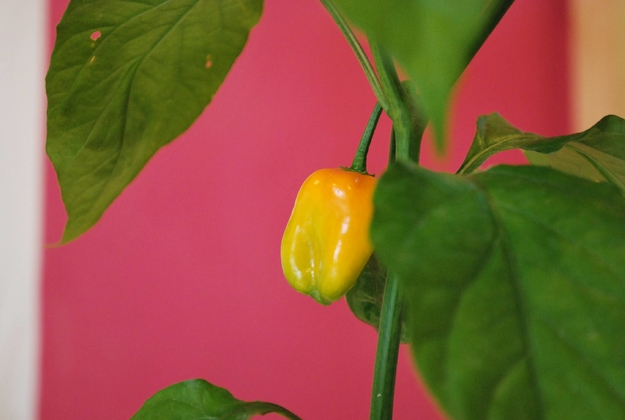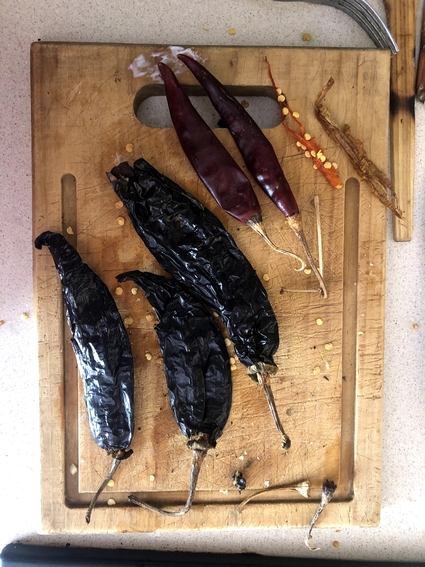Project description
We offer the pleasure experience of the thresholds of pain, as enjoyed by the cultures that eat chili peppers as a central ingredient of their cuisines.
Chili Pepper Pleasure is an empiric contribution to our food literacy, specifically concerning the biochemistry and cultural history of the pleasure of pain in cuisine where chili pepper is a central ingredient.
In a dark environment, participants will enjoy carefully curated pairings that represent matching characteristics of local cuisines, including, for example, the habanero culture of the Yucatán in Mexico, kanthari from Kerala India, Capsicum Annuum from Northern Thailand, in quantified, increasing levels of spice, stopping at the threshold of pleasure.
Through the conversations and based on the discovered preferences, the participants will be gifted seeds and care instructions to culture their tailored-matched serotonin-triggering chili pepper species, sensitised to the cultures that build culinary traditions around it.
The empirical learning experience of Chili Pepper Pleasure is fundamental to learning about the biochemistry among our food and our brains, among stimulation, perception, subjectivity and taste, and to promote cultural flexibility in learning about ourselves and others in their relation to pain and pleasure in food.
Possible ways to expand the project
Serotonin Measurement
It is said that eating chili pepper boosts serotonin levels. The spike in this love and happiness hormone could explain its wide consumption in different cultures. But can the direct effect of chili pepper consumption on serotonin levels be measured? In this Stage 2 research plan, we propose to experimentally test serotonin levels in participants and ourselves before and after eating chili peppers. In our initial research, we found several online laboratory serotonin blood tests (~230 euro) and serotonin urine tests (~55 euros). Other options would be neuroimaging tools such as PET scans and fMRI. We would like to get in touch with scientists knowledgeable on the subject to determine further steps in serotonin testing.
Chili Pepper Disco
The Latin dances are all from countries where chili pepper is widely consumed. Is this a spurious correlation or could there be a causal link between chili peppers intake and dancing skills? In other words, does chili pepper make you a better dancer? To test this, we propose the Chili Pepper Disco. What is the best music to be combined with chili pepper flavours? And how to eat while dancing? To find out, we propose a series of Chili Pepper Discos, serotonin-inducing party experiments following the Chili Pepper Pleasure event.
Personal introduction
Roland van Dierendonck (NL, 1991) is an artist, biologist and PhD researcher at the Lab4Living, Sheffield Hallam University, translating human-microbe connections into sensory experiences using haptics (touch) and microscopy. Roland has had a long interest in food-related events and workshops, including the Ecosystematic Lunch (Utrecht, 2017), Jörð (2021) and the Riverbank Buffet (Linz, 2021).
Maro Pebo (Mexico City, 1987) works on defying anthropocentrism and on sceptical environmental accountability. PhD in Creative Media at the City University of Hong Kong, Maro has published and presented her research and artworks internationally including at Performance Research, ISEA, EVA, ISCMA, Media Art Histories, ArsElectronica, Toronto Design Festival, Gerdau Museum in Belo Horizonte, Brazil and The Lahore Media Arts Festival in Pakistan.
Estimated costs
Stage 1: 500 euros for materials (food, prints) and preparation Stage 2: 2000 euros for serotonin test and materials.
This proposal is part of the 'Penny for your Thoughts' project 2022.


